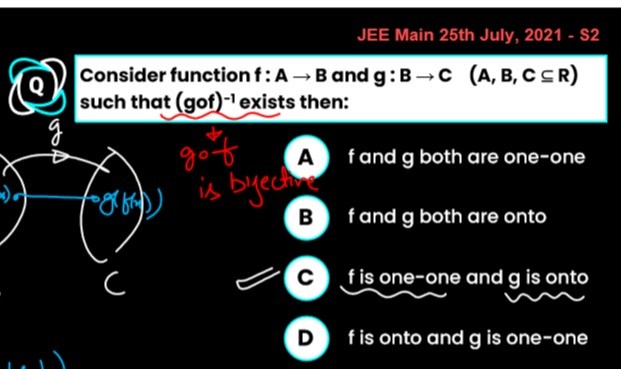Question
Question: Consider function f: A→B and g: B→C (A, B, C⊆R) such that (gof)⁻¹ exists then:...
Consider function f: A→B and g: B→C (A, B, C⊆R) such that (gof)⁻¹ exists then:

f and g both are one-one
f and g both are onto
f is one-one and g is onto
f is onto and g is one-one
f is one-one and g is onto
Solution
The existence of (g∘f)−1 implies that the composite function g∘f is bijective (both one-one and onto).
-
Injectivity of g∘f: If g∘f is injective, then f must be injective. This is because if f(a1)=f(a2), then (g∘f)(a1)=g(f(a1))=g(f(a2))=(g∘f)(a2). For g∘f to be injective, a1=a2 must hold, which means f must be one-one.
-
Surjectivity of g∘f: If g∘f is surjective, then for every c∈C, there exists an a∈A such that (g∘f)(a)=c. This means g(f(a))=c. Let y=f(a). Since f:A→B, y∈B. Thus, for every c∈C, there exists an element y in the domain of g (which is B) such that g(y)=c. This shows that g is surjective (onto).
Therefore, if (g∘f)−1 exists, then f is one-one and g is onto.
The conditions for the existence of (g∘f)−1 are that f must be injective and g must be surjective.
